State of ZX 2024
Quantum Error Correction
Aleks Kissinger

Quantum error correction
...is done by encoding some space of logical qubits
into a bigger space of physical qubits:
- $E$ (or just $\textrm{Im}(E)$) is a called a quantum error correcting code
- QECCs are used to:
- encode (and sometimes decode) logical states
- measure physical qubits to detect/correct errors
- do fault-tolerant computations on encoded qubits
Quantum error correction in ZX
two main approaches:
- The graphical encoder approach, adopted e.g. by the "grok" papers
$\quad \leadsto \quad$
- The Pauli web approach used e.g. by PsiQ and FU Berlin group

Graphical encoder
- The idea: represent the encoder isometry $E$ directly as a ZX diagram
$\quad = \quad$
- ZX fragments $\leftrightarrow$ types of QEC codes
- Clifford ZX-encoder $\leftrightarrow$ stabiliser codes
- phase-free ZX-encoder $\leftrightarrow$ CSS codes
- Fault-tolerant QC $:=$ pushing through the encoder
Stabiliser codes
- QECCs whose subspace is fixed by a commutative subgroup $\mathcal S \subseteq \mathcal P_n$
$\{ |\psi\rangle \, | \, \forall \vec P \in \mathcal S \ .\ \vec P|\psi\rangle = |\psi\rangle \} \cong \mathbb C^{2^k}$
- $E$ is fixed by $m := n-k$ stabiliser generators:
$\mathcal S = \langle \vec P_1 , \ldots, \vec P_m \rangle$ $(\vec P_j E = E)$
- ...and $2k$ logical operators:
- Detect/correct errors by measuring $\vec P_i$. The code distance $d$ is the weight of the smallest undetectable error $\leadsto [[n,k,d]]$
CSS codes
- Calderbank-Shor-Steane codes are stabiliser codes whose generators split into "all-X" and "all-Z" parts:
$\mathcal S = \langle \vec X_1 , \ldots, \vec X_{m_1}, \vec Z_1 , \ldots, \vec Z_{m_2} \rangle$
- Equivalently, a pair of orthogonal subspaces $S_Z \perp S_X$ of $\mathbb F_2^n$ \[ \vec v \in S_X \qquad \leadsto \qquad X^{v_1} \otimes \ldots \otimes X^{v_n} \in \mathcal S \] \[ \vec v \in S_Z \qquad \leadsto \qquad Z^{v_1} \otimes \ldots \otimes Z^{v_n} \in \mathcal S \]
- Generally easier than generic stabiliser codes, can import stuff from linear algebra and classical ECC or use...
Phase-free ZX diagrams
| \[ :=\ \ |0...0\rangle\langle 0...0| + |1...1\rangle\langle 1...1| \] | |
| \[ :=\ \ |{+}...{+}\rangle\langle {+}...{+}| + |{-}...{-}\rangle\langle {-}...{-}| \] | |
| \[= \ \ N \sum_{\oplus_i b_i = 0} |b_1...b_n\rangle\langle b_{n+1}...b_{n+m}|\] |
Normal forms
Phase-free ZX diagrams can be reduced efficiently to (pseudo-)normal form:
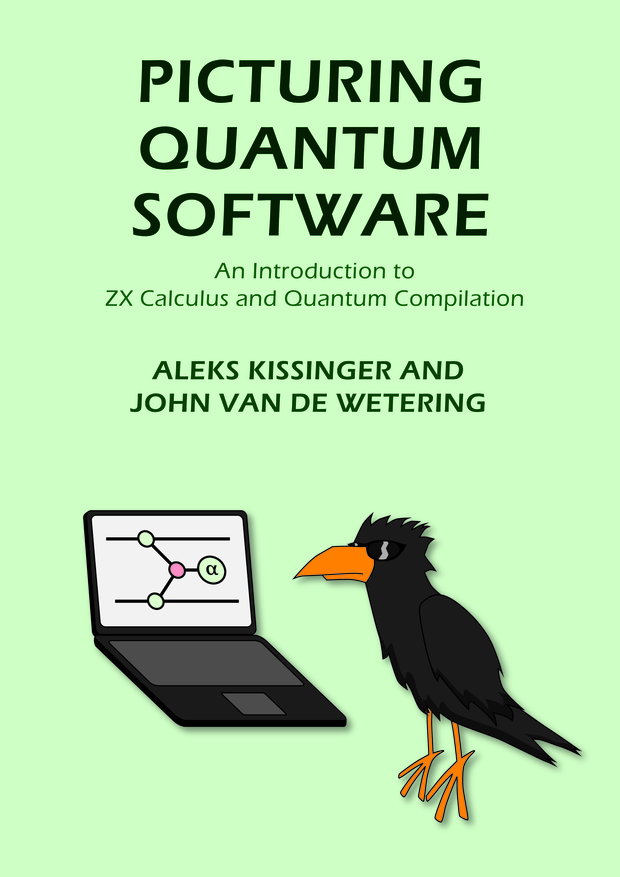 » PQS, Chapter 4
» PQS, Chapter 4
Special case: isometries
Isometry $\quad \implies \quad m \leq n ,\ \ j = 0$Scalable notation:
 » PQS, Chapter 10
» PQS, Chapter 10Scalable CSS encoder:
 » PQS, Chapter 11
» PQS, Chapter 11
Application: transversal Cliffords
 » PQS, Chapter 11
» PQS, Chapter 11
Application: transversal non-Cliffords
...when $(L_X, S_X)$ is strongly triorthogonal.
 » PQS, Chapter 11
» PQS, Chapter 11
Application: lattice surgery
 » PQS, Chapter 11
» PQS, Chapter 11
Application: CSS code transformations


arXiv:2307.02437
Stabiliser encoders
- Generic stabiliser codes $\implies$ $E$ is a Clifford ZX-diagram ($\alpha \in \{ j \cdot \frac\pi2 \}$)
- Clifford ZX-diagrams have multiple efficiently-computable normal forms, e.g.
GSLC form AP form
Application: canonical forms for encoders
Variations on GSLC normal form give canonical forms for encoders, and allow convenient expressions of equiv. classes of codes.


arXiv:2301.02356 | arXiv:2406.12083
Application: concatenated graph codes
Clifford ZX-calculus enables computing the
graph code of a concatenated graph code:

arXiv:2304.08363
QEC in ZX
two main approaches:
- The graphical encoder approach, adopted e.g. by the "grok" papers
$\quad \leadsto \quad$
- The Pauli web approach used e.g. by PsiQ and FU Berlin group

Pauli webs
the motto: "circuits not codes"
- Think of a (possibly infinite/periodic) sequence of gates and measurements as a "generalised" QECC

- Physical qubits are the wires, logical qubits and QEC properties are defined by certain wire-colouring rules, called Pauli webs

Pauli webs
...can be used to study:- Stabiliser codes, using the circuit that measures all the stabilisers

- Floquet codes, using a periodic sequence of (possibly non-commuting) Pauli measurements
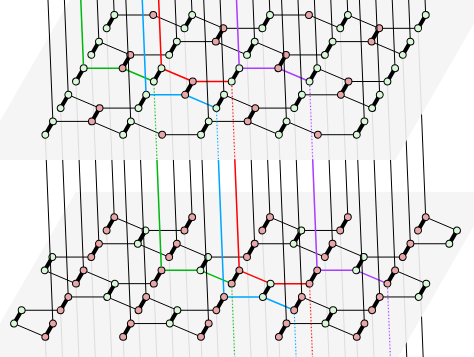
- More general "codes", where we just do stuff and see what the QEC properties are
Application: unifying FTQC
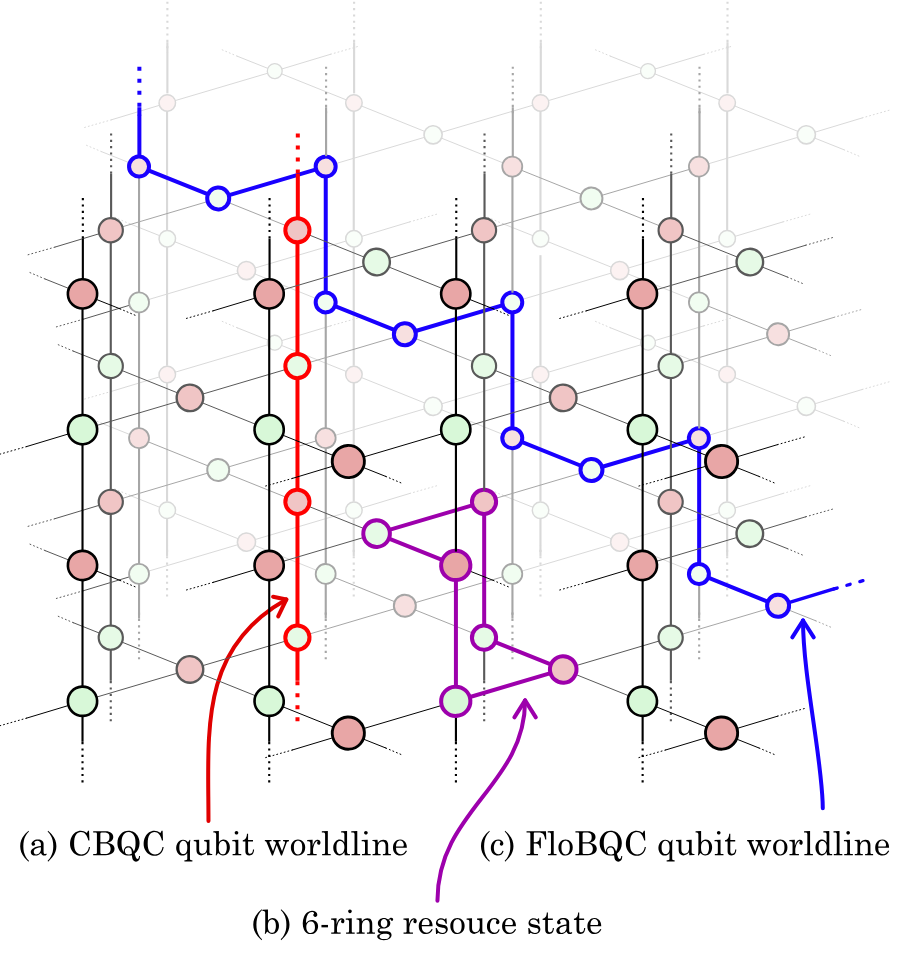
arXiv:2303.08829
Application: Floquetification
Distance-presv. transformations from stabiliser codes in Floquet codes
 $\leadsto$
$\leadsto$

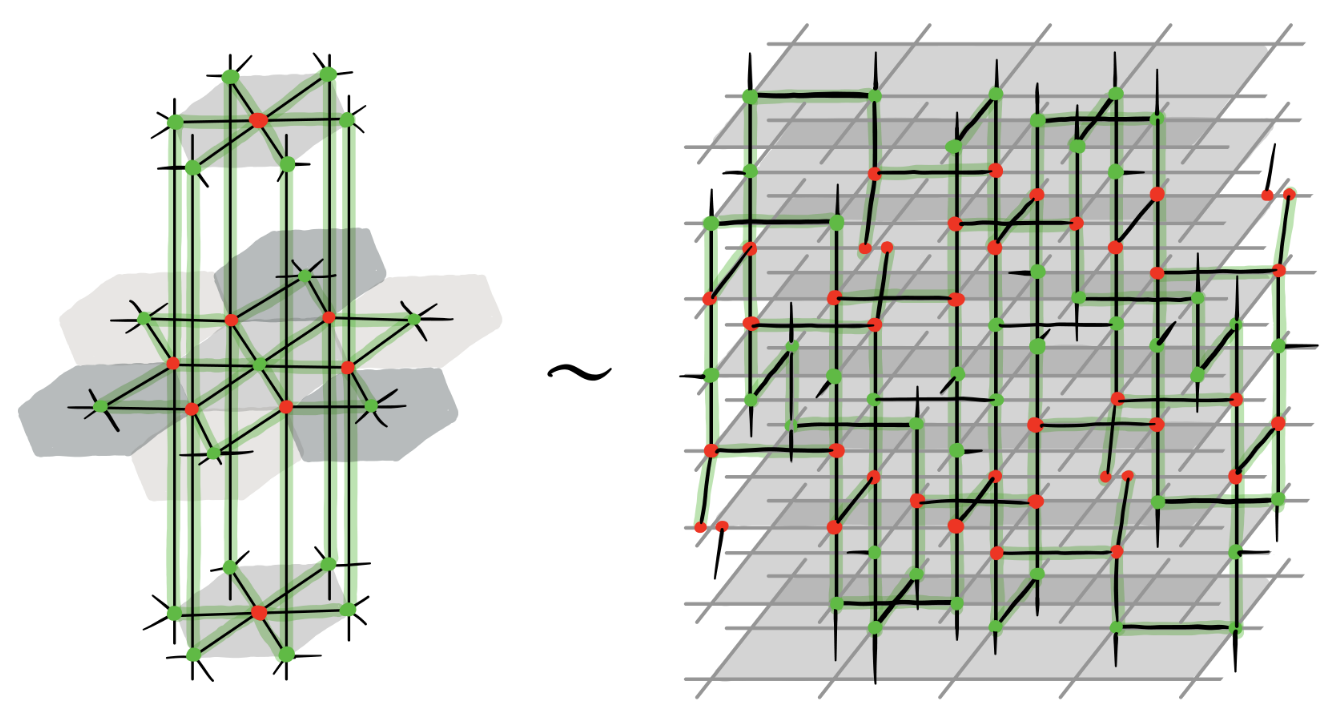
Beyond ZX-encoders and Pauli webs
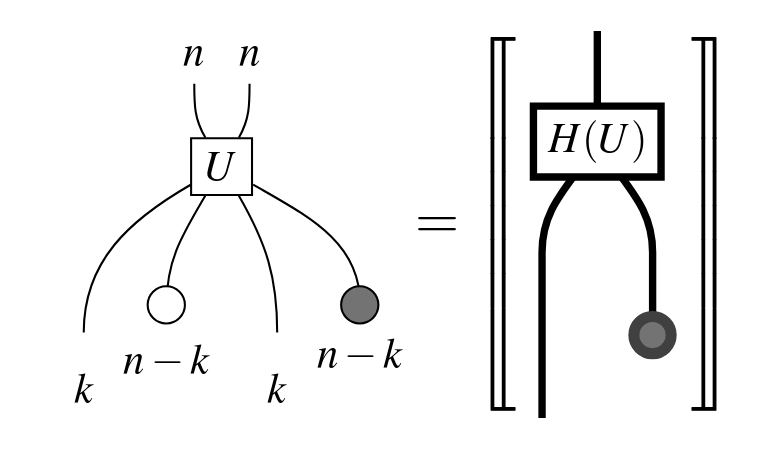 |
 |
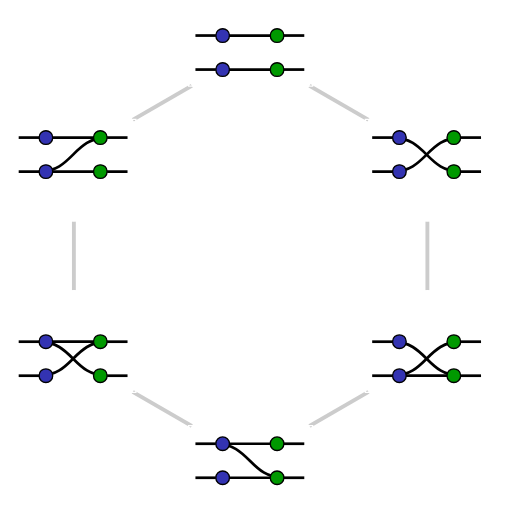 |
| Quopit stabiliser codes with graphical symplectic algebra | XYZ ruby codes with 3-color ZX variation |
Genon codes |
| arXiv:2304.10584 | arXiv:2407.08566 | arXiv:2406.09951 |
...and more: zxcalculus.com/publications.html